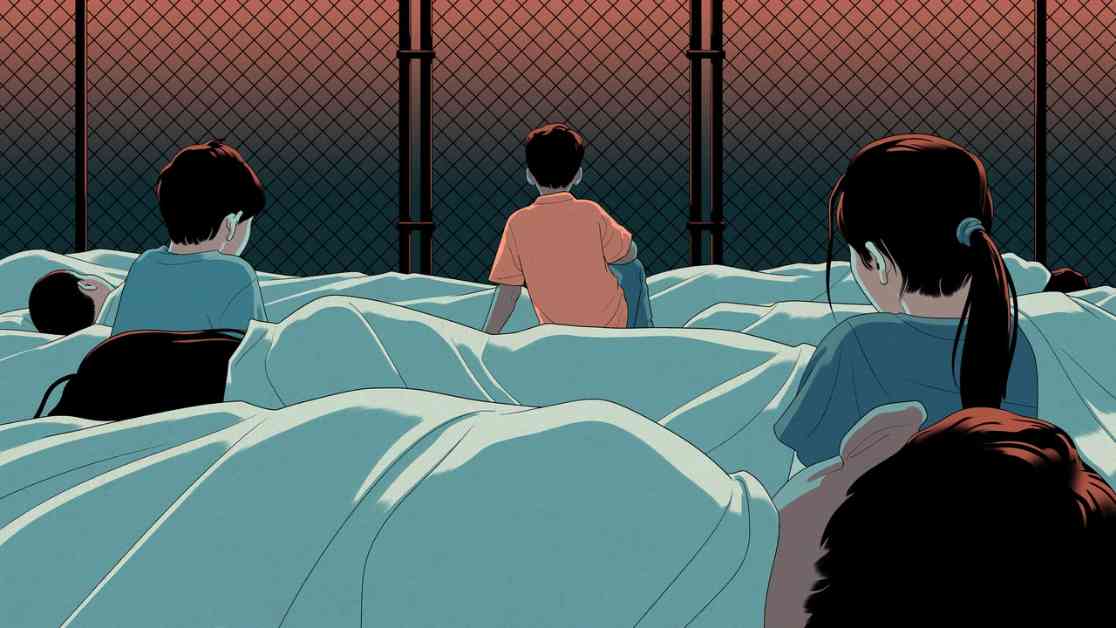A heartbreaking reality exists at the intersection of immigration, detention, and death in the United States. The stark statistics and harrowing trends surrounding immigrant deaths in U.S. custody paint a chilling picture of suffering and loss. From the stretches of Customs and Border Protection jails along the southern border to the remote corners of the Canadian frontier, the conditions faced by migrants are often dire and life-threatening.
In the most recent fiscal year of 2022, fifty-two individuals tragically lost their lives while in C.B.P. custody, amounting to an average of one death per week. These deaths, while occurring with alarming frequency, often go unnoticed by the general public. However, in December of 2018, two deaths shocked the nation for a profoundly tragic reason – the victims were children. Jakelin Caal Maquin, a seven-year-old girl, succumbed to a bacterial infection on December 8th, while Felipe Gómez Alonzo, an eight-year-old boy, passed away from complications of influenza on Christmas Eve. Hailing from Indigenous communities in Guatemala, these young souls became the faces of a movement against the harsh immigration policies of the Trump Administration.
The profound impact of the deaths of Caal and Gómez reverberated across the nation, spurring a wave of empathy and solidarity towards immigrants. A Gallup poll conducted a month after their passing revealed a notable shift in public sentiment, with Americans displaying more pro-immigrant attitudes than seen in decades. Despite the tragic loss of these young lives, the harsh realities of immigration detention persist, with plans to detain a staggering one hundred thousand individuals – a number comparable to Japanese Americans interned during World War II.
Humanizing the Statistics: Personal Stories of Tragedy
The stories of individuals like Wilmer Josué Ramírez Vásquez and Martin Vargas Arellano shed light on the personal tragedies that unfold within the confines of immigration detention centers. Ramírez, a two-year-old Guatemalan child, fell victim to a combination of influenza, E. coli, and gut parasites while in C.B.P. custody, eventually succumbing to his illnesses in a hospital. His death, like many others, went unreported by the agency, underscoring the lack of transparency and accountability in the system. Vargas, a fifty-five-year-old man suffering from multiple health conditions, met a similarly tragic fate while detained in a California ICE facility, succumbing to COVID-19 after being denied parole multiple times.
These heart-wrenching narratives highlight the urgent need for reform and oversight within the immigration detention system. The lack of public reporting and accountability mechanisms surrounding migrant deaths raises serious concerns about the treatment of vulnerable individuals in custody. The stories of Ramírez and Vargas serve as poignant reminders of the human cost of harsh immigration policies and the need for compassion and humanity in addressing these complex issues.
The Veil of Secrecy: Concealing Deaths and Displacing Responsibility
Despite legal requirements mandating the public reporting of deaths in custody, both C.B.P. and ICE have exploited loopholes and obscured fatalities to avoid scrutiny. The removal of watchdog officials like Christi Grimm and the lack of transparency surrounding migrant deaths point to a troubling pattern of concealment and negligence within these agencies. The deaths of individuals like Genry Ruíz Guillén, Serawit Gezahegn Dejene, and Maksym Chernyak, while officially labeled as detainees, received minimal attention or outrage, underscoring the broader indifference towards adult deaths in the deportation system.
The administration’s aggressive tactics in coercing other countries to accept deported migrants, coupled with the lack of oversight and accountability, create a chilling environment where deaths can easily be concealed or disregarded. The inhumane conditions faced by migrants in remote detention centers and makeshift facilities further exacerbate the risks to vulnerable individuals, with little hope of their stories reaching the public eye. As the cycle of detention, suffering, and death continues unabated, the urgent need for systemic change and compassion towards migrants grows more pressing than ever.
In conclusion, the intersection of immigration, detention, and death in the United States reveals a complex web of human suffering, systemic failures, and political indifference. The stories of individuals like Jakelin Caal Maquin, Felipe Gómez Alonzo, Wilmer Josué Ramírez Vásquez, and Martin Vargas Arellano offer a glimpse into the personal tragedies that unfold within the harsh realities of immigration detention. As the nation grapples with the profound impact of these losses, the urgent call for reform, transparency, and compassion in addressing the plight of migrants becomes increasingly critical. Only through a collective commitment to human rights, dignity, and justice can we hope to prevent further tragedies and uphold the values of a compassionate society.












